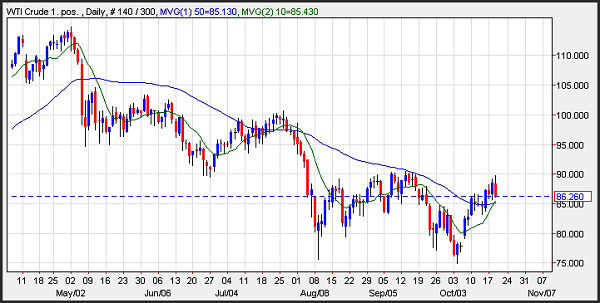Sentiment in the oil pits turned negative during the afternoon trading session despite better than expected inventory data released by the Department of Energy. Oil prices followed US equities lower, which were dragged down by worse than expected earnings from Apple on Tuesday. WTI declined more than $2 dollars a barrel testing support levels.
The inventory reflected a bullish picture, but was unable to keep oil prices above water. U.S. crude inventories decreased by 4.7 million barrels week over week. Expectations were for a small decline in inventories. Total gasoline inventories decreased by 3.3 million barrels week over week compared to expectations that inventories would rise slightly as the US is now out of the official driving season. Distillate fuel inventories, which includes heating oil, decreased by 4.3 million barrels last week. Total commercial petroleum inventories decreased by 10.9 million barrels last week. Total demand over the last four-week period averaged 18.8 million barrels per day, down by 0.9 percent compared to the similar period last year.

Crude prices began to fall after the Federal Reserve released its Beige Book report. The Fed said that growth increased modestly, by will likely remain sluggish for the foreseeable future. Traders also kept implied volatility high, specifically on the crude oil contract which remains robust. The OVX crude oil index pushed back above 50%, as traders are still willing to pay a significant premium into this weekend’s European Summit.
Crude oil prices test the $90 dollar a barrel resistance level early in the trading session by was unable to break through resistance despite the solid inventory numbers. Support for crude oil remains near the 50-day moving average near 86.30. The cross of the 10-day moving average above the 50-day moving average is a signal to trend following traders that a current upside trend could gain momentum.
Comments (No)